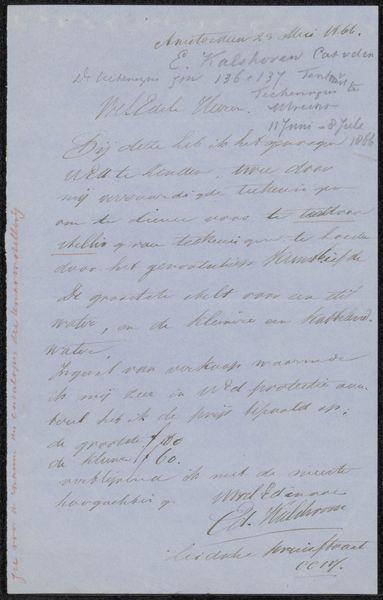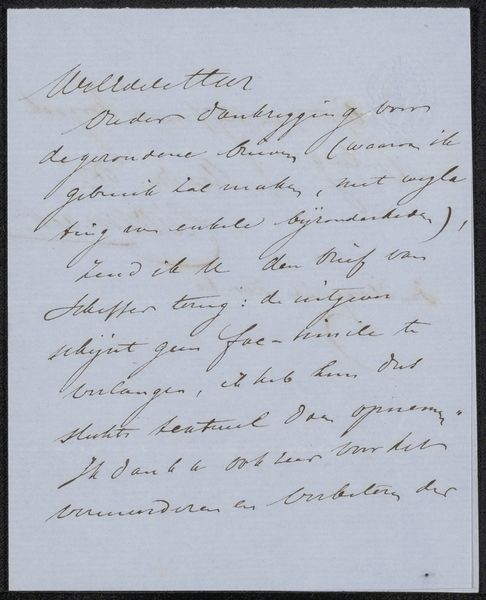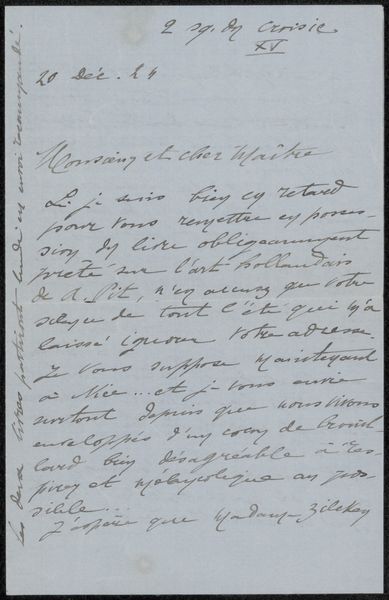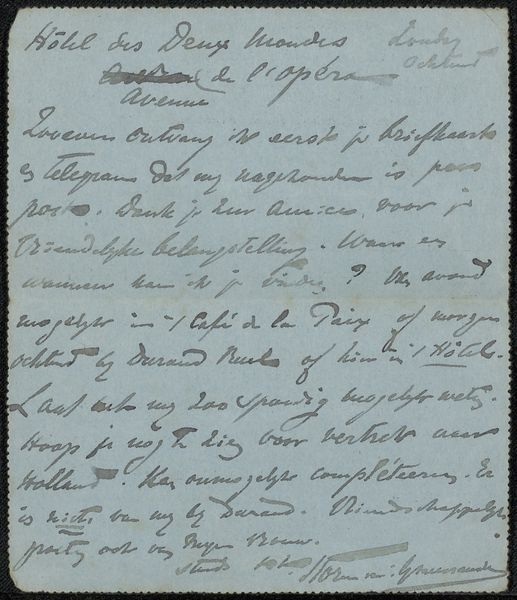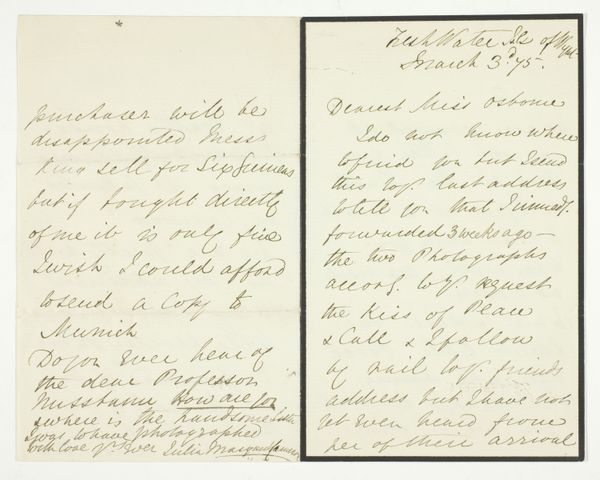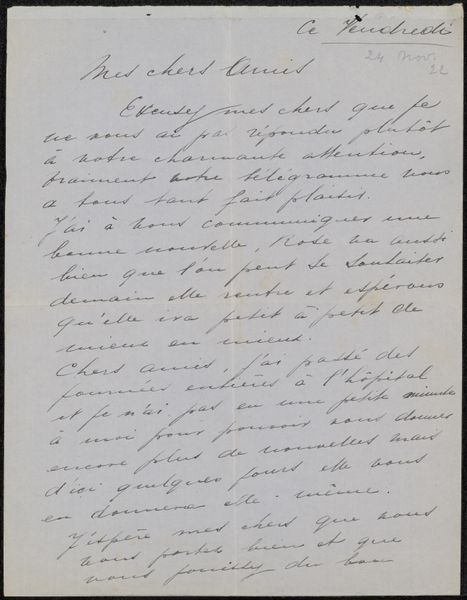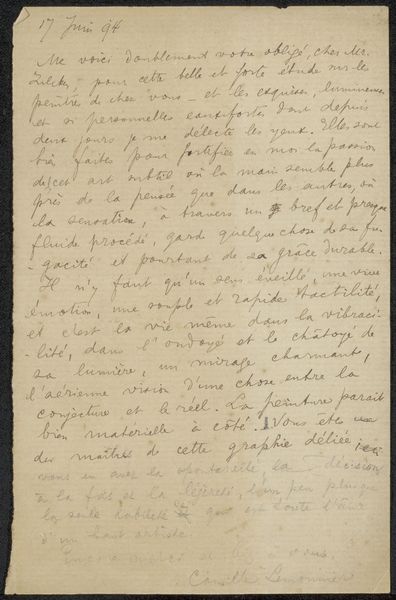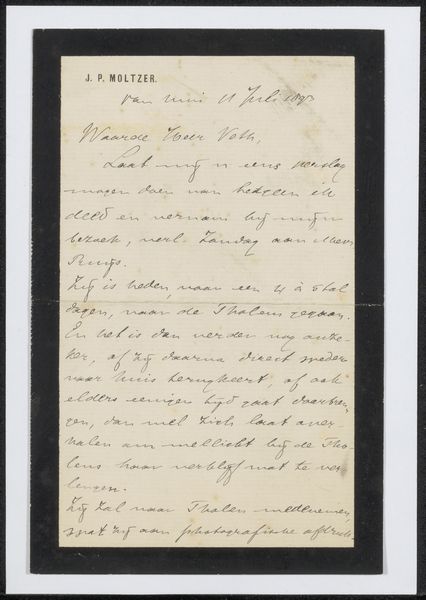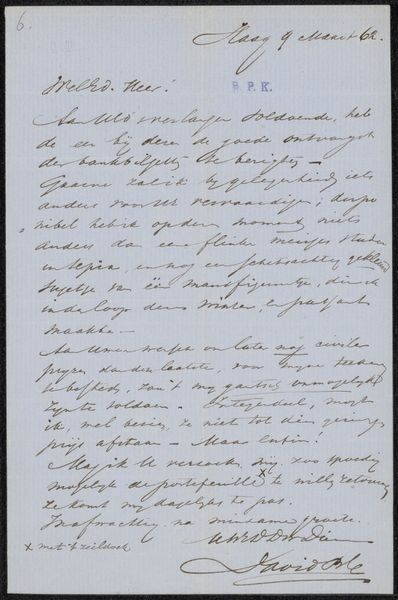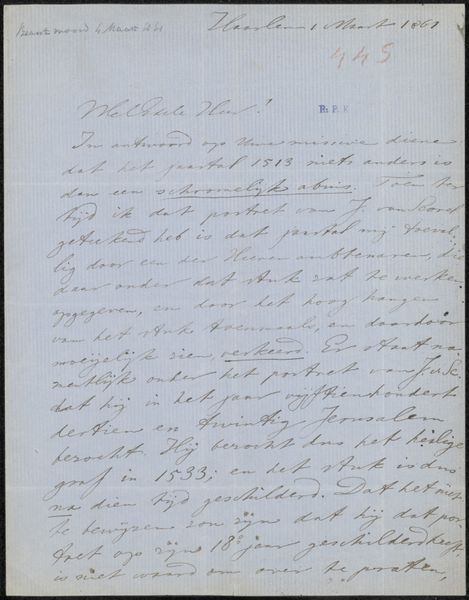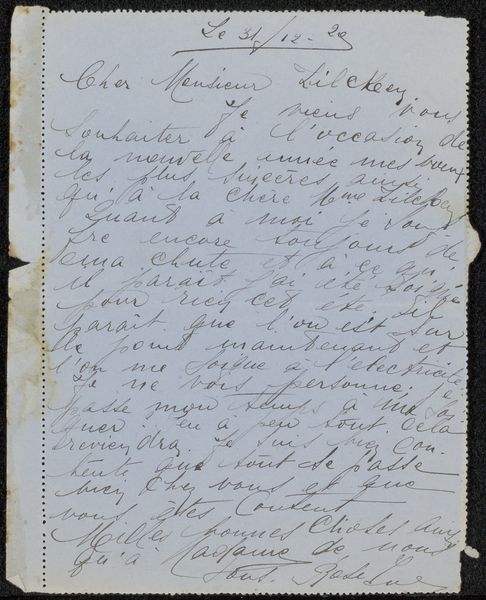
drawing, paper, ink
#
drawing
#
paper
#
ink
Copyright: Rijks Museum: Open Domain
Curator: We're looking at "Brief aan anoniem," or "Letter to Anonymous," possibly created around 1866 by Johannes Franciscus Hoppenbrouwers. It’s currently held in the Rijksmuseum collection. The medium used includes ink on paper. Editor: My initial impression is… intimate. The handwriting, the thin lines, it feels like catching a glimpse into a private correspondence, like peeking into someone else's thoughts frozen in time. There’s a wistful quality to it. Curator: Intimate is a perfect word. This document outlines Hoppenbrouwers submitting three drawings to an exhibition. He meticulously describes each: "A swampy landscape in winter," "A Noordwijk landscape by the setting sun" – priced at 150 guilders!– and finally, "A winter scene in sepia," at 75 guilders. He ends the letter hoping for success. Editor: It’s fascinating how it collapses the artistic and the economic. It’s a bill of goods, but there is artistry in its careful articulation, not unlike a scribe carefully crafting a legal document or inventory. He’s a producer pitching commodities to the world. The drawings *are* for sale, but are described poetically—materials valued but a sale is hoped. Curator: It underscores the artist as both creator and vendor, navigating the art market. I almost wish we had the anonymous recipient's response to complete the conversation across time. Did the swampy landscape sell, I wonder? Editor: Right, what were the consumption patterns then and why those prices for drawings like that. I also wonder about the material of the paper itself; its provenance, where Hoppenbrouwers got it, and whether the watermarks, or paper grain could even lead us to knowing if Hoppenbrouwers perhaps used common papers—was the use or consideration of a paper a means of value itself, then? Curator: A material history investigation...intriguing! Well, I find myself charmed by this quiet document—a small window into the daily grind and artistic aspirations of an artist nearly a century and a half ago. It really personalizes the process of creativity. Editor: Indeed! And thinking through paper stock or consumer sales just opens it up more. It reminds us that art and labor are interwoven, the letter as a receipt for something created but now a product, itself.
Comments
No comments
Be the first to comment and join the conversation on the ultimate creative platform.

